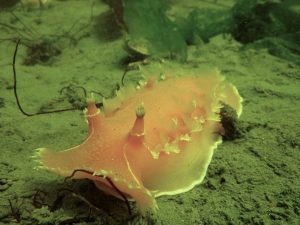Olfactory navigation in aquatic gastropods
Russell C. Wyeth
Biology, St Francis Xavier University, Canada
Slugs and snails are slow, with poor eyesight. They tend to rely on odours for sensation of distant features. When present, wind or water currents that transport odours also become important for detecting odour sources. Thus, gastropods are likely to use either chemotaxis or odour-gated rheotaxis to navigate, depending on the flow (or lack thereof) they experience. Various gastropods have been studied, exploring their olfactory responses to prey, predators or conspecifics. However, the underlying proximate mechanisms of navigation have received patchy attention. Our research has focused on the navigational behaviours and sensory systems of aquatic gastropods. The nudibranch, Tritonia diomedea, primarily uses odour-gated to rheotaxis in turbulent odour plumes. The results of sensory nerve lesions show that a single rhinophore (cephalic sensory tentacle) still provides sufficient input to produce normal navigation. Chemosensory afference can be recorded from the rhinophore but, as yet, differential activity linked to flow direction has been elusive. Meanwhile, our neuroanatomical studies of a freshwater snail (Lymnaea stagnalis) and another opisthobranch (Aplysia californica) have demonstrated a panoply of putative sensory cells. Some of these are presumably the chemoreceptors and mechanoreceptors involved in navigation. However, modalities remain untested. Accordingly, our most recent work is establishing olfactory navigational responses in both still and flowing water for L. stagnalis. We are also exploring neural-specific gene expression patterns. These set the stage for genetic manipulations of function to determine modalities. Intriguing comparisons with other taxa also remain, including the prevalence of straight-line navigation in gastropods rather than counter-turns or casting, the time scales of sensory adaptation for such slow-moving animals, and the integration of mechanosensory input to determine flow direction in soft-bodied animals.









You must be logged in to post a comment.